Yangyishi Zhang
Smart Wireless Environment Enhanced Telecommunications: A Network Stabilisation Paradigm for Mobile Operators
Jun 11, 2024



Abstract:Due to the uncontrolled and complex real-life radio propagation environments, Claude Shannon's information theory of communications describes fundamental limits to state-of-the-art 5G radio access network (RAN) capacity, with respect to fixed radio resource usage. Fortunately, recent research has found that a holographic metasurface-based new physical layer architecture may hold the key to overcome these fundamental limits of current mobile networks under a new paradigm, smart wireless environment (SWE), where the long-standing challenge of mobile communications, fading channel hostility, may be solved, leading to a step-change boost in network performance and user experience. Despite recent research activities in SWE, the best way to implement it as a network operator remains an open challenge. In this industrial review, we adopt a novel yet realistic mobile channel stabilisation perspective for network operators to understand this paradigm shift. More specifically, we provide a technical analysis of the synergy between key next-gen mobile network enablers, e.g., holographic metasurface, wireless sensing, and machine intelligence, as well as of how this synergy leads to a robust future RAN architecture. Against the as yet unclear theoretical boundaries and low technology readiness level (TRL) of SWE enhanced telecommunications, we conclude by identifying critical challenges in future commercial deployments.
Model-free Optimization and Experimental Validation of RIS-assisted Wireless Communications under Rich Multipath Fading
Feb 21, 2023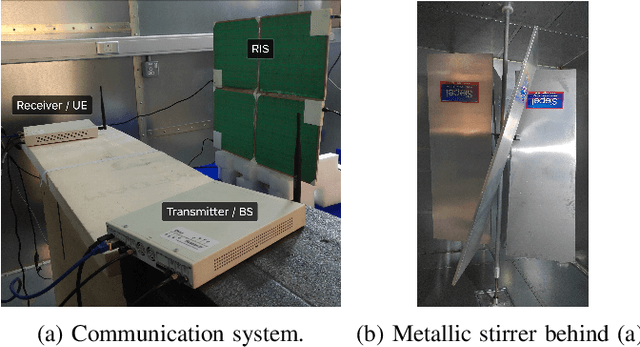
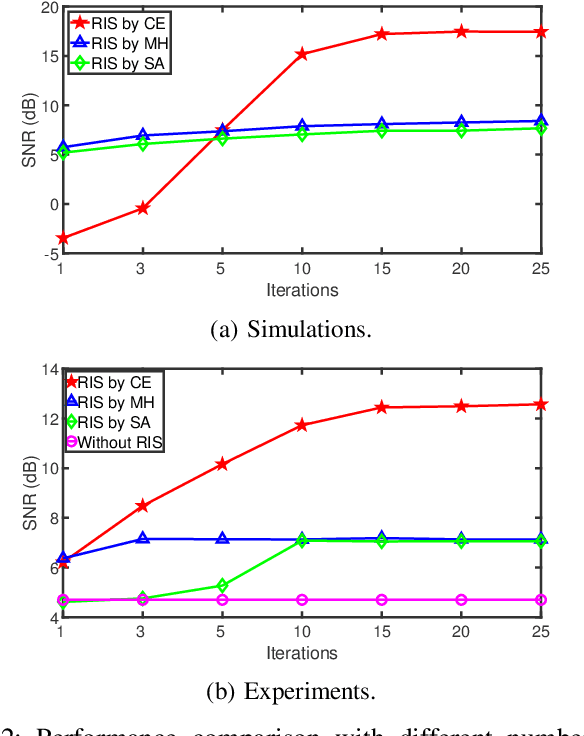
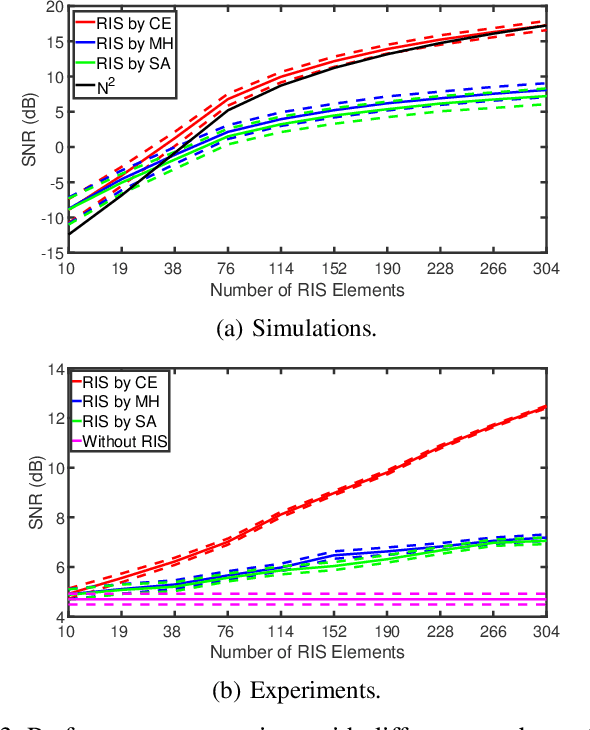
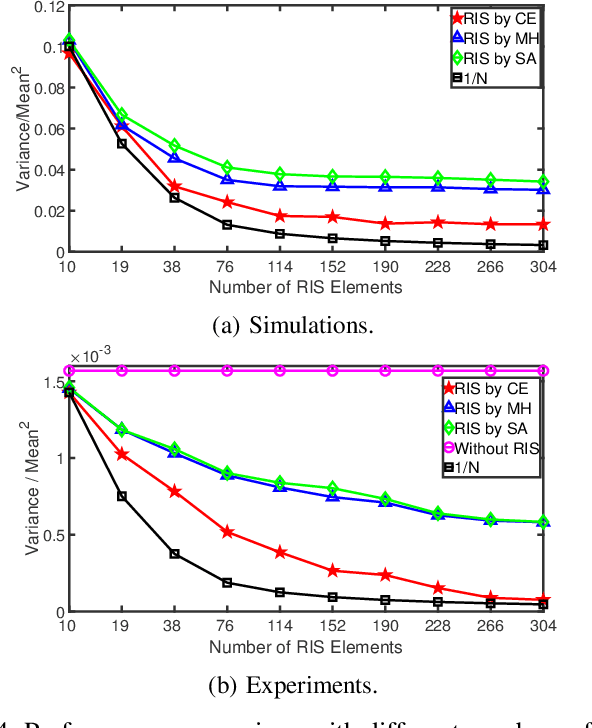
Abstract:Reconfigurable intelligent surface (RIS) devices have emerged as an effective way to control the propagation channels for enhancing the end users' performance. However, RIS optimization involves configuring the radio frequency (RF) response of a large number of radiating elements, which is challenging in real-world applications due to high computational complexity. In this paper, a model-free cross-entropy (CE) algorithm is proposed to optimize the binary RIS configuration for improving the signal-to-noise ratio (SNR) at the receiver. One key advantage of the proposed method is that it only needs system performance parameters, e.g., the received SNR, without the need for channel models or channel estimation. Both simulations and experiments are conducted to evaluate the performance of the proposed CE algorithm. The results demonstrate that the CE algorithm outperforms benchmark algorithms, and shows stronger channel hardening with increasing numbers of RIS elements.
Deep Learning Based Predictive Beamforming Design
Feb 02, 2023
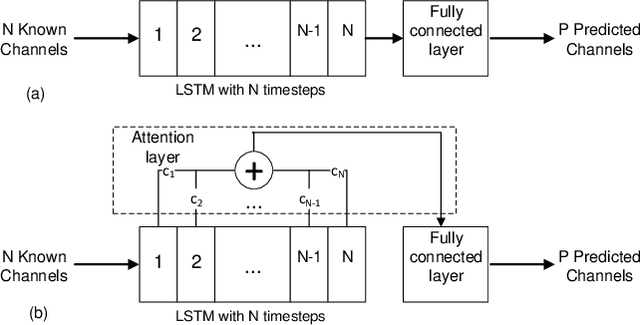
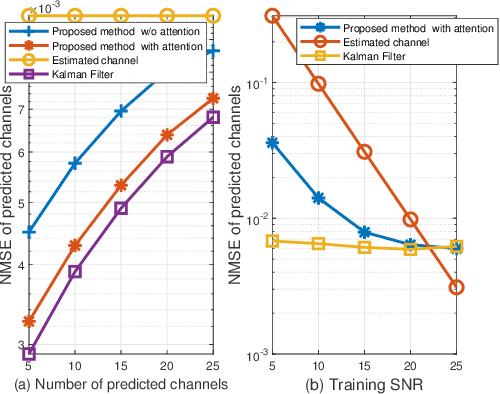
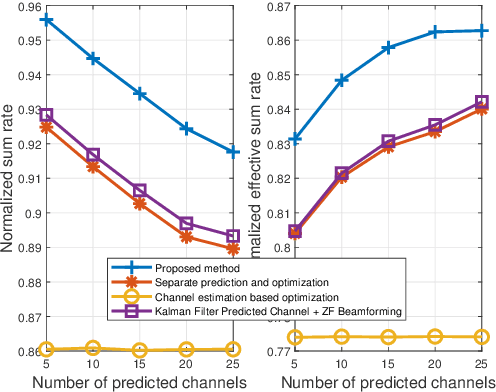
Abstract:This paper investigates deep learning techniques to predict transmit beamforming based on only historical channel data without current channel information in the multiuser multiple-input-single-output downlink. This will significantly reduce the channel estimation overhead and improve the spectrum efficiency especially in high-mobility vehicular communications. Specifically, we propose a joint learning framework that incorporates channel prediction and power optimization, and produces prediction for transmit beamforming directly. In addition, we propose to use the attention mechanism in the Long Short-Term Memory Recurrent Neural Networks to improve the accuracy of channel prediction. Simulation results using both a simple autoregressive process model and the more realistic 3GPP spatial channel model verify that our proposed predictive beamforming scheme can significantly improve the effective spectrum efficiency compared to traditional channel estimation and the method that separately predicts channel and then optimizes beamforming.
 Add to Chrome
Add to Chrome Add to Firefox
Add to Firefox Add to Edge
Add to Edge